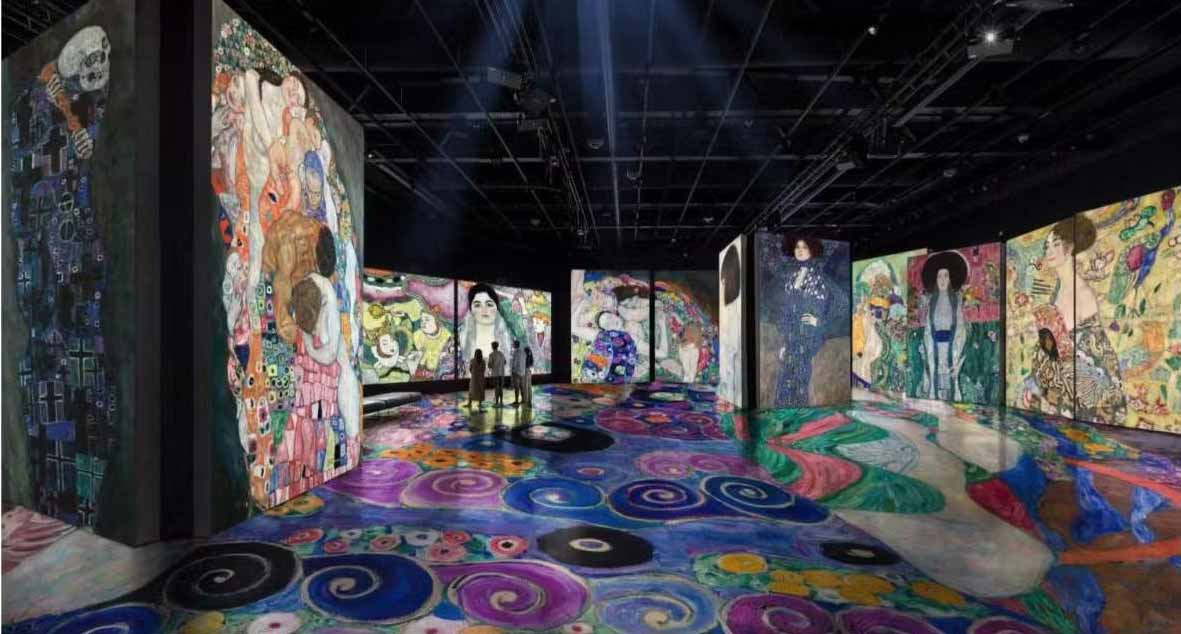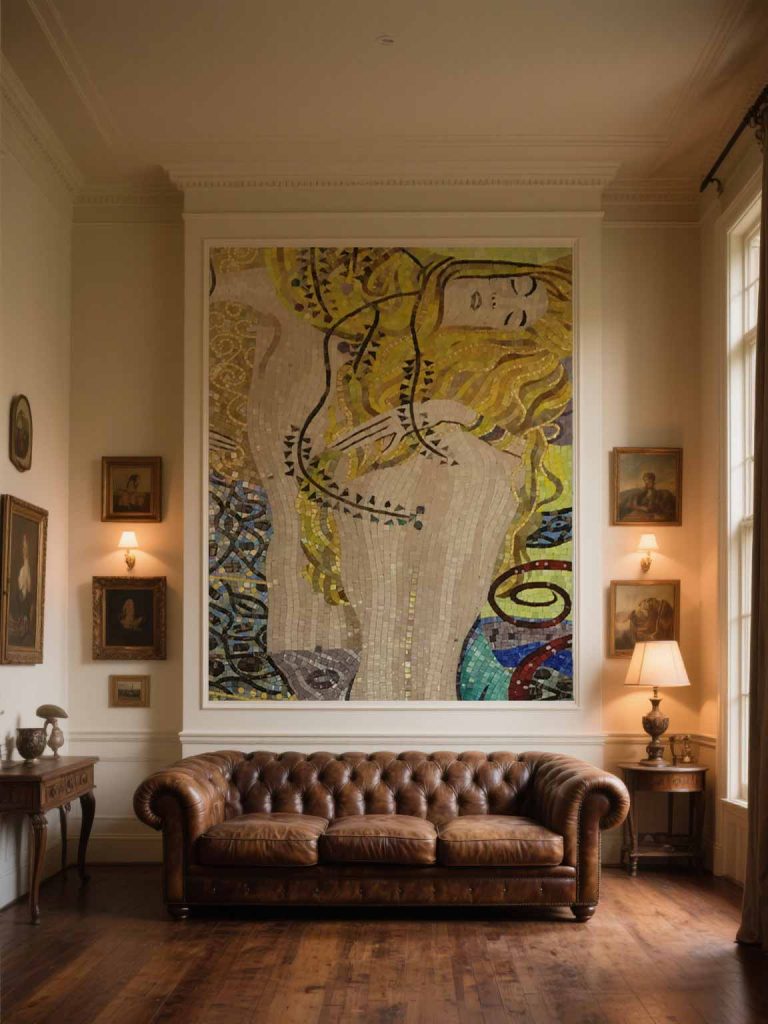Gustav Klimt was an Austrian Symbolist painter, as well as a founder and leader of the Vienna Secession. His works centered on the female figure, showcasing his unique sensibility for color, form, and ornamentation. His painting style evolved through several phases, the most renowned being his “Golden Phase”—a period when he extensively used gold leaf and golden hues to create opulent, mysterious effects.
One of his most beloved and influential works, Water Serpents I, was created between 1904 and 1907 as part of a series focusing on water serpent themes. The painting depicts two intertwined water snakes, their bodies adorned with vivid patterns and jewel-like details, set against a deep blue background of water ripples that contrasts sharply with the serpents’ colors. Rich in symbolism, the water snakes can be interpreted as emblems of female desire, vitality, transformation, and rebirth. Klimt employed his signature gold-leaf technique here, combining gold leaf with oil paints to craft an atmosphere of luxury and allure—further deepening the work’s significance as a tribute to his long-time lover Emilie Flöge, his muse, model, and the most important woman in his life. To Klimt, Water Serpents I was not just a masterpiece, but a romantic ode to beauty and affection.
This iconic work has now become a timeless inspiration for handcrafted glass mosaic art—an art form that uses tiny colored glass pieces as “brushes” to recreate classic scenes or thematic imagery on flat surfaces. When artisans set out to reimagine Water Serpents I as a mosaic, they first outline the painting’s delicate contours: the sinuous curves of the intertwined snakes, the intricate patterns on their bodies, and the soft undulations of the deep blue water. They then curate glass fragments by hue and texture: golden-toned glass to echo Klimt’s signature gold leaf, vibrant colored shards to replicate the serpents’ jewel-like patterns, and translucent or frosted blue glass to mimic the shimmer of water ripples. With tweezers, each piece is carefully placed, piece by piece.
The magic lies in how mosaic art elevates the original work’s charm: different finishes of glass (transparent, frosted, metallic) create layered light and shadow, just as Klimt’s gold leaf and oil paints did—bringing the water snakes’ vitality and the water’s depth to vivid life. The edges of each mosaic tile catch the light, endowing the reimagined Water Serpents I with the same sacred glow as Klimt’s original, while the handcrafted process adds a warm, artisanal touch that preserves the painting’s symbolic depth and emotional resonance.
Beyond recreating masterpieces like Water Serpents I, mosaic art itself is a harmonious blend of decoration, engineering precision, and design ingenuity. Crafted for both large-scale projects (such as hotel lobbies or public spaces) and bespoke interiors (residential walls, private studies), these intricate glass or stone pieces balance artistic expression with functional durability. Whether transforming Water Serpents I into a wall accent for a living room or adapting other classic works into mosaic decor, every tile placement reflects both engineering accuracy (ensuring longevity) and creative vision (honoring the original theme). This makes mosaic art a standout choice for anyone seeking to infuse spaces with timeless artistry—turning ordinary surfaces into canvases that tell stories of classic beauty, handcrafted warmth, and enduring charm.


